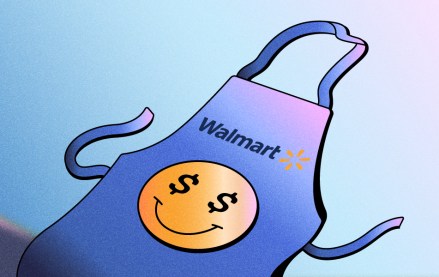Register by Jan 13 to save on passes and connect with marketers from Uber, Bose and more
Google hands Smartly creative automation brief to promote hardware range

Google is in the process of contracting with Smartly to test the ad tech company’s creative automation platform, according to people familiar with the matter, with the initiative expected to include a series of proof-of-concept pilots beginning in the fourth quarter.
Digiday understands the tests will explore how Smartly’s tools can help Google scale creative asset generation using AI, an increasingly common request from marketers, particularly around campaigns for its hardware, such as the Pixel and Chromebook ranges.
Separate sources, all of whom requested anonymity due to the nascent nature of the operations, said Google views the collaboration as a way to bring more “intelligent creative” into its marketing mix, with the potential to expand further if the trials prove successful.
Google’s communications team was unable to respond to Digiday’s request for clarification by press time.
The proof-of-concept pilots are designed to gauge whether Smartly’s technology can deliver greater efficiency and flexibility, particularly in accelerating creative workflows through a process known as “asset automation,” compared to those currently employed by Google.
For Google, the pilots reflect a growing recognition of the need to streamline how its campaigns come together, particularly for high-profile consumer launches.
Smartly, a company founded in Finland in 2013, and has since expanded through the purchase of Viralspace and AdLib in 2021 and 2022, respectively, pitches itself as a way for advertisers to automate asset production while still leaving room for human direction.
In particular, Smartly claims its wares can help reduce the time and cost of producing thousands of ad variants across social, display and video formats through its partnerships with platforms such as Amazon, Google-owned properties such as YouTube, Meta, Snap and TikTok.
The tie-up also highlights how large marketers, even those with extensive in-house resources, are exploring external technology partners to keep pace with the demands of digital advertising. With campaigns requiring more personalized messaging and faster turnaround times, platforms such as Smartly are positioning themselves as essential infrastructure.
Smartly hosted its annual ADVANCE conference in New York City last week, where the company’s CEO, Laura Desmond, cited research by the company, which led her to forecast that 100% of all ads will be powered by AI by 2028.
“Every non-working dollar can become a working one. AI makes more content possible so much more affordably,” she said during her conference keynote address, where the industry veteran – formerly she held senior positions at Starcom Mediavest Group, Adobe, the Advertising Council, etc. – also claimed it would help advertisers “move beyond click-metrics.”
Speaking with Digiday, Desmond said Smartly’s platform generates 92 billion “creative signals” each week, data which it then structures to optimize further campaign assets that perform better with audiences.
“We are reading in real time what people want to engage with and what they’re actually using as the precursor to buying, to shopping,” she added. “Click-metrics are necessary, but that isn’t the end, or the outcome you’re looking for… they get you to the point where you can start to read all these creative signals, and you have the ability to understand what consumers are liking, paying attention to and what’s leading to that purchase.”
More in Marketing

Inside the brand and agency scramble for first-party data in the AI era
Brands are moving faster to own first-party data as AI and privacy changes alter the digital advertising landscape.

Walmart Connect takes a play out of the Amazon playbook to make agentic AI the next battleground in retail media
The next retail media war is between Walmart Connect’s Sparky and Amazon’s Rufus, driven by agentic AI and first-party data.

What does media spend look like for 2026? It could be worse — and it might be
Forecasts for 2026 media spend range from 6.6% on the lower end to over 10% but the primary beneficiaries will be commerce, social and search.








